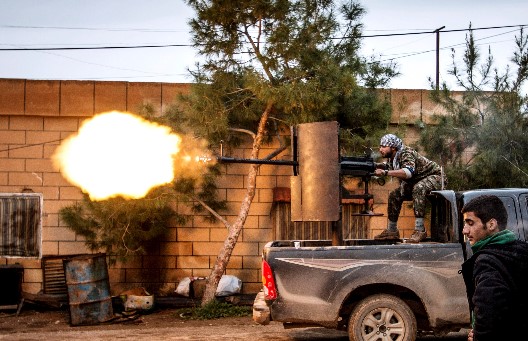
For those of us old enough to recall the Vietnam War, fact and reality were obscured and mangled by successive White Houses anxious to reach the delusional “light at the end of the tunnel.” Tragically, at the end of the tunnel lay a quagmire that consumed 58,000 American and countless Vietnamese lives. In the highly complex and complicated fight against the Islamic State (IS), are fact and reality similarly being distorted or ignored by the White House either because of lack of understanding of the conflict or other human error and misjudgment?
In Vietnam, a combination of profound ignorance and misunderstanding of the nature of the war produced a fatally flawed strategy based on gradual escalation to increase pain and cost on the enemy and search and destroy missions in which the body count became the default metric for weighing success or failure. Then the war was waged with four or five different ground and air campaigns that were never integrated into a single, coherent approach with clarity of purpose or a clear understanding of what would constitute victory or defeat.
Despite the complaints of critics, unlike Vietnam, the White House has a cogent strategy and campaign plan for countering IS. While destroying IS is not achievable, degrading and defeating it are. To accomplish those objectives, the five-part plan is aimed at targeting and eliminating IS fighters; stemming the influx of foreign fighters; cutting off the means of financing for IS; providing a counter-narrative refuting IS’ murderous and barbaric ideology; and providing humanitarian relief and stability in recaptured territory as IS is rolled back and defeated.
But that plan alone is not enough for success. Execution of the plan and how well it integrates all of government’s capabilities as well as those of allies, friends, and members of the coalition is vital. The nature of the conflict must be better understood in order to set appropriate aims that attack the causes accounting for the rise and success of IS and not merely the symptoms such as seizure of territory and promiscuous use of inhuman terror. And there must be the realization that a 20th century highly bureaucratic and dense organizational structure will not work against a very adaptive 21st century threat.
To make these points more starkly consider three questions.
First, who in the White House is in overall charge and how is the White House organized in waging the fight against IS?
Second, how is the coalition of 62 member states and the more operationally oriented coalition of 20 organized and structured, and how precisely defined and assigned are the authorities, responsibilities, priorities, and oversight tasks?
Third, how well integrated and coordinated is the US chain of command with four different combatant commanders (Central, European, African, and Special Forces commands) with other government agencies, including State, CIA, and Treasury; the new ground force commander; the President’s Special Envoy retired Marine Gen John Allen; and the country team in Baghdad headed by the ambassador? The answers are telling.
IS did not mysteriously appear as Athena did from the brow of Zeus. And its predilection for the most extreme forms of barbarism was neither accidental nor necessarily psychotic. Many of IS’ roots lay in the actions of both the pre- and post-war Iraqi governments that alienated and persecuted as well as butchered its Shia and Sunni populations and the institutions and culture arising from the civil war. Unless these realities and facts are understood and addressed, this fight could continue indefinitely and unsuccessfully.
Unfortunately, the prospects for another Sunni awakening to fight IS appear slim. Many Sunni tribal sheiks have been killed or forced to flee the country. Ironically, Shia militias, legitimized by perhaps Iraq’s most influential leader Ayatollah Ali al-Sistani’s fatwa (religious decree) issued last June calling on Shia males to take up arms against IS and supported, if not directed, by Iran, may be the most effective means of driving IS from Iraq while the Iraqi army is undergoing retraining ostensibly to retake Iraq’s second-largest city, Mosul.
Senior leaders such as Gen Allen understand this. It is not clear, however, that the White House does. In these circumstances, the Presidentshould undertake an immediate review of the assumptions, priorities, and organization underwriting the strategy and campaign plan with the authority to challenge each and all. And then the President must have the execution of the strategy intensely examined to determine how well or badly it is being conducted.
Failure to do so may not guarantee a Vietnam on the Tigris and Euphrates. But this is not a risk to be taken.
Harlan Ullman is Chairman of the Killowen Group that advises leaders of government and business and Senior Advisor at the Atlantic Council and Business Executives for National Security. His latest book is A Handful of Bullets: How the Murder of Archduke Franz Ferdinand Still Menaces the Peace.
Image: A fighter of the Kurdish People's Protection Units (YPG) fires an anti-aircraft weapon from Tel Tawil village in the direction of Islamic State fighters positioned in the countryside of the town of Tel Tamr February 25, 2015. (Photo: Reuters)
